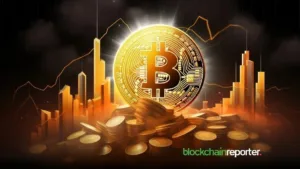Forks, or chain splits, create an alternate version of the blockchain, leaving two blockchains to run simultaneously.
What Is a Fork (Blockchain)?
When changes are made to blockchain technology they’re referred to as a “fork.”
Another reason a fork can occur is when the miners’ software updates don’t align with one another. If this happens the mining community has to decide which path the blockchain should take. If a decision can’t be reached, or the community itself can’t agree, two different versions of the blockchain will exist.
The extremities to which the blockchain will change is dependent on whether a hard fork or a soft fork takes place.
A soft fork is the addition of a new rule to the protocol, which is still compatible with older rules and is backwards compatible. This means that upgraded nodes can still communicate with non-upgraded nodes. In other words, new blocks will still be recognized as valid by old nodes, so it’s less of a dramatic change.
A hard fork happens when a permanent change takes place in the blockchain network. This change isn’t backwards compatible, which means that all nodes or users would need to upgrade to the new version of the software, as the older version wouldn’t work anymore. The new version would create its own transactions and blocks. Essentially, it’s an entirely new blockchain.



